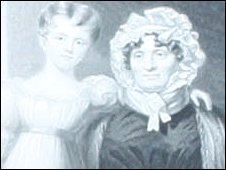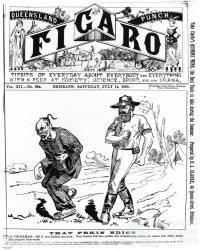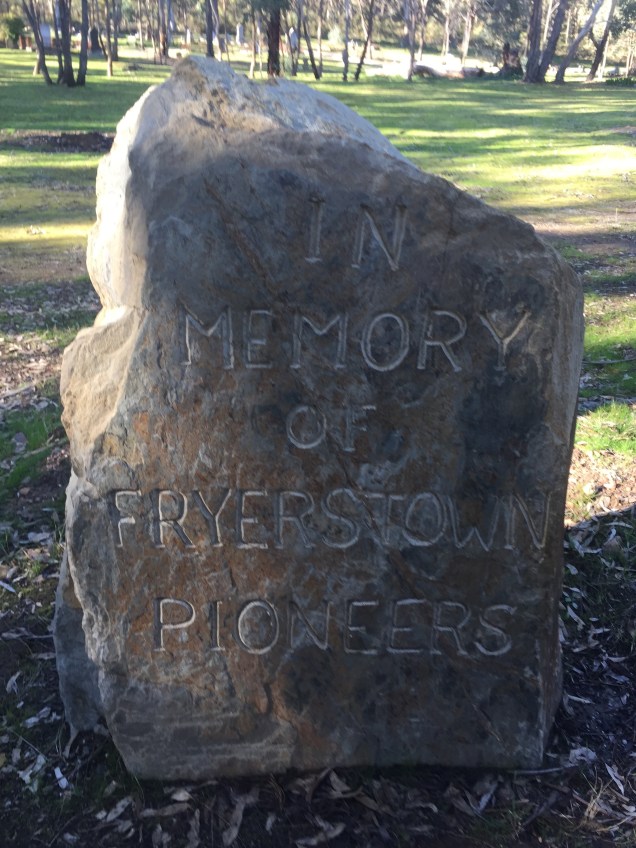The land around here is ancient. About 480 million years ago it was all under the sea. Then a couple of tectonic plates collided deep underground, squeezing everything like a vice.

I love the idea of sitting on the top of Tarrengower reading the story, as told by Justice B Nelson, and published by Culture Victoria, of two feuding volcanoes named Tarrengower and Lalgambook (Mount Franklin)
“A long, long time ago, long before anyone but the Traditional People walked our Country, our lands, rivers, mountains and animals alike, all had magical life. They had personalities, purpose, speech and they could think for themselves.
Tarrengower in the Dja Dja Wurrung means to be big and heavy and indeed he was just that; big, bold, wise and a very proud old volcano who had become very tired throwing out rocks and lava and preferred to sit humbly watching over the plains.
Another volcano called Lalgambook was a young, loud and cheeky volcano that started to challenge old Tarrengower’s wisdom and authority, and began grumbling and building up anger towards the old volcano. But Tarrengower, being the wise old volcano that he was, decided he should just try to ignore this cheeky little volcano.
Lalgambook grew even angrier that Tarrengower wasn’t acknowledging his threats and started to put on a display of smoke, ash and brimstone to impress the land and animals who were also watching, but this didn’t intimidate the wise old Tarrengower. Instead he just laughed at Lalgambook.
Lalgambook became so frustrated that he began to throw large rocks at Tarrengower who grumbled with annoyance at this cheeky volcano and Tarrengower now began to taunt young Lalgambook by telling him he wasn’t very strong at all because the rocks couldn’t reach him.
Lalgambook exploded with great fury, spurting out lava and smoke high into the sky and hurled gart gart in Tarrengower’s direction, but still could not reach him. This caused Lalgambook to completely blow his core!
Tarrengower’s anger eased and he just grumbled at this cheeky little volcano who was now just coughing and spluttering with no energy left at all.
All the rocks thrown by Lalgambook at Tarrengower can still be seen today and have formed what is known in the present day as the Guilford Plateau where the Jaara people would perform ceremonies on the Bora grounds also known as Yapene.”
Copyright of this story
The writers, photographers and the State of Victoria
 In Game of Thrones men have maintained a watch on the wall for thousands of years. The fire tower on top of Mount Tarrengower has been consistently manned by firespotters, long term occupants of the tower, since the days of Oliver Ralph in the 1950’s. Most recently Peter Skilbeck has been on the watch!
In Game of Thrones men have maintained a watch on the wall for thousands of years. The fire tower on top of Mount Tarrengower has been consistently manned by firespotters, long term occupants of the tower, since the days of Oliver Ralph in the 1950’s. Most recently Peter Skilbeck has been on the watch!
The Advance Maldon Association brought the tower that stand on the top of Mount Tarrengower from Bendigo to Maldon to attract visitors to the area after the goldmining had almost ceased. The tower was originally the poppet legs of the Comet Mine in Bendigo, and was brought to Maldon by rail in 80′ (24m) lengths. It was carried up the mountain on a timber jinker drawn by a team of horses, along a track cut from Butts Reserve to the summit. A Mr. William Adams put up the money for the project, approx. 600 pounds. During the Maldon Easter Fair, held annually since 1877, the lookout tower is illuminated. Prior to the 1950s, this was done by wiring up over 100 makeshift lanterns, using stone ginger beer bottles, hemp wicks and kerosene. The bottles were hidden in a disused mine shaft until the next Easter.
Source: Fire Lookouts Downunder
The viewing distance from this tower is up to 100 km in all directions, except northwards to Bendigo and Mount Alexander where it is about 30 km.
Take the time to visit Mount Tarrengower and the cheeky younger volcano across the way. Learn about the spirits of volcano’s and draw upon their energy.
Volcano Folklore:
This page is only meant for educational use!



















 The other stone, not far from the isolated Catholic Ground is inscribed with the words “A tribute to those who lay beneath may they have found peace”. After substantial rainfall this part of the world is truly beautiful. With only the sound of nearby grazing sheep I think it is a good place to lie and rest.
The other stone, not far from the isolated Catholic Ground is inscribed with the words “A tribute to those who lay beneath may they have found peace”. After substantial rainfall this part of the world is truly beautiful. With only the sound of nearby grazing sheep I think it is a good place to lie and rest.





 So you can imagine my delight when I finally found the Fryerstown cemetery. A Cemetery may not be on everyone’s list of top 10 places to visit but this one is particularly special. I thought that it would be a great place to take morning or afternoon tea in a picnic basket. It was there that
So you can imagine my delight when I finally found the Fryerstown cemetery. A Cemetery may not be on everyone’s list of top 10 places to visit but this one is particularly special. I thought that it would be a great place to take morning or afternoon tea in a picnic basket. It was there that


















 In this international bestseller, forester and author Peter Wohlleben convincingly makes the case that, yes, the forest is a social network. He draws on groundbreaking scientific discoveries to describe how trees are like human families- tree parents live together with their children, communicate with them, support them as they grow, share nutrients with those who are sick or struggling, and even warn each other of impending dangers. Wohlleben also shares his deep love of woods and forests, explaining the amazing processes of life, death, and regeneration he has observed in his woodland. After you have read The Hidden Life of Trees, a walk in the woods will never be the same again.
In this international bestseller, forester and author Peter Wohlleben convincingly makes the case that, yes, the forest is a social network. He draws on groundbreaking scientific discoveries to describe how trees are like human families- tree parents live together with their children, communicate with them, support them as they grow, share nutrients with those who are sick or struggling, and even warn each other of impending dangers. Wohlleben also shares his deep love of woods and forests, explaining the amazing processes of life, death, and regeneration he has observed in his woodland. After you have read The Hidden Life of Trees, a walk in the woods will never be the same again.




















 Follow Blanket Gully Road until it comes to a T intersection and you enter a very different world from the new housing estate, on the outskirts of Campbells Creek, that you pass to get here. This is a corner of the world full of stones,
Follow Blanket Gully Road until it comes to a T intersection and you enter a very different world from the new housing estate, on the outskirts of Campbells Creek, that you pass to get here. This is a corner of the world full of stones, 


















 As I wandered about a flood of memories rose! I also remembered those carefree days in the early sixties when my parents had their first portable bar-b-que and we stopped at places like this
As I wandered about a flood of memories rose! I also remembered those carefree days in the early sixties when my parents had their first portable bar-b-que and we stopped at places like this 
















 The Forest Creek Geo Maze is constructed from eight concentric circles of rocks. The six types of rocks are representative of the main periods of geological activity in the goldfields region. The oldest rocks are placed around the outer circle and the younger rocks are in the centre.
The Forest Creek Geo Maze is constructed from eight concentric circles of rocks. The six types of rocks are representative of the main periods of geological activity in the goldfields region. The oldest rocks are placed around the outer circle and the younger rocks are in the centre.


 I have always been fascinated by Clarissa Pinkola Estes idea of making a full length scapecoat to detail one’s scars in painting, writing, with all manner of things pinned and stitched inside. It is the perfect place to pin all that one has endured, “all the insults, the slurs, all the traumas, all the wounds”. Such a coat is a way of visually portraying one’s endurance and the victory of still standing tall.
I have always been fascinated by Clarissa Pinkola Estes idea of making a full length scapecoat to detail one’s scars in painting, writing, with all manner of things pinned and stitched inside. It is the perfect place to pin all that one has endured, “all the insults, the slurs, all the traumas, all the wounds”. Such a coat is a way of visually portraying one’s endurance and the victory of still standing tall.
















 This old yellow box has nothing to say to me about the insanity of the gold fever that bought hoards here and even less about the people who lived in the nearby ruins. But maybe, if I come visiting often enough, he might just reveal something about how to live alone through times of loss and change.
This old yellow box has nothing to say to me about the insanity of the gold fever that bought hoards here and even less about the people who lived in the nearby ruins. But maybe, if I come visiting often enough, he might just reveal something about how to live alone through times of loss and change.

